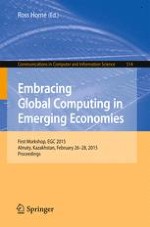2015 | Book
Embracing Global Computing in Emerging Economies
First Workshop, EGC 2015, Almaty, Kazakhstan, February 26-28, 2015. Proceedings
Editor: Ross Horne
Publisher: Springer International Publishing
Book Series : Communications in Computer and Information Science
